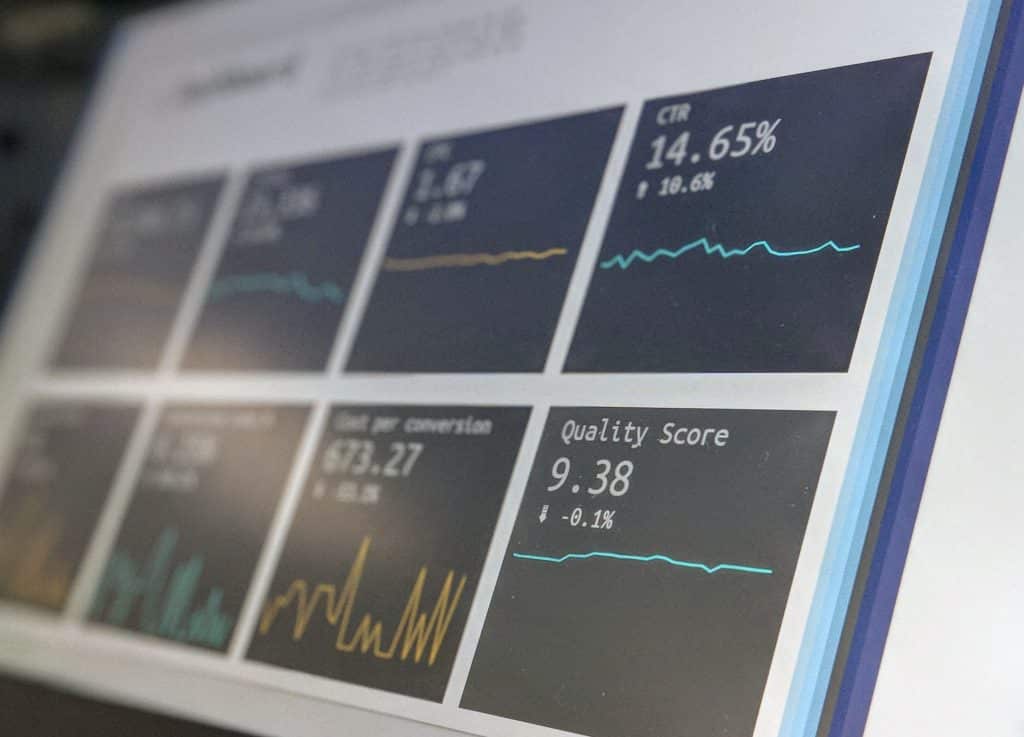19 Big Data Problems You Need to Solve

In the last two years, over 90% of the world’s data was created, and with 2.5 quintillion bytes of data generated daily, it is clear that the future is filled with more data, which can also mean more data problems.
Whilst it is clear that companies can benefit from this growth in data, executives must be cautious and aware of the challenges they will need to overcome, particularly around:
- Collecting, storing, sharing and securing data.
- Creating and utilising meaningful insights from their data.
Luckily, there are pragmatic solutions that companies can take to overcome their data problems and thrive in the data-driven economy.
Here’s a look at some common data problems and how you can solve them.
Coming Up
1. Finding and Fixing Data Quality Issues
2. Long Response Times from System
3. Confusion with Big Data Tool Selection
4. Real Time Big Data Problems
6. High Cost of Data Solutions
8. Complex Systems for Managing Data
10. Low Quality and Inaccurate Data
13. Keeping Up With Growth in Data
18. Processing Large Data Sets

What is Big Data?
A commonly used buzzword, big data is everywhere, which is why it’s always being talked about! Data is collected and generated from almost everything we do- be it streaming a show, submitting a form online, sending an email, reading a text, creating a report, etc.
To define what big data is, the four V’s are used, namely:
- Volume: The size of data (i.e. petabytes or exabytes)
- Velocity: The speed at which data flows
- Veracity: The validity of the data
- Variety: The nature of the data (structured and unstructured formats)
1. Finding and Fixing Data Quality Issues
When dealing with the data, the utmost importance is its accuracy. After all, every insight you glean from data will depend on the data itself. It all begins during the data collection phase. At this time, you want to be sure that you’re collecting data from the right sources at the right time if you’re going to apply the data for outputs.
Along with the collection of data, data quality will also depend on how you store the data. It must be made accessible in order to be analysed (this is where automation solutions come into play).
During the data lifecycle, you must also maintain data properly so that it can be used by the right team at any point in time for application. This data usage is what breeds decision-making abilities. To learn how to keep data clean and reduce data quality issues, check out this guide.
2. Long Response Times from System
Clean and accurate data is just as important as data being accessible when you need it. If you’re using a data tool that’s slow, then by the time your data is available for use, it could be considered outdated and old.
You want data to be able to be processed immediately when you input it so you can make use of your output in a timely manner.
One way to fix long response times from your system is to ensure that data is being stored efficiently by performing data re-engineering. Or, look for a more optimised data system that’s scalable for your growing data needs.
3. Confusion with Big Data Tool Selection
Another challenge when dealing with big data is choosing the right big data tool for your business’ needs. Since your big data tool is geared towards reducing big data problems, it’d be a shame if it became a problem in itself!
In order to overcome this challenge, it’s best to take time performing research and not jump too quickly into a specific tool. Additionally, be sure to review what kind of support the tools you’re considering offer.
If the option exists to schedule a demo, take advantage of it because it will give you a view of how the big data solution will work specifically for your business.
4. Real Time Big Data Problems
As we mentioned, big data exists everywhere. As such, data is constantly changing and evolving, which thus impacts the insights you glean from it. Technically, this requires a tool that can provide up-to-date filtering and remove redundant or irrelevant data from the picture when you’re applying it.
A surefire way to overcome real-time big data issues is to deploy an automation solution that utilises artificial intelligence (AI) to process, analyse, and structure data in real-time. By doing so, you can avoid big data problems at every turn.
5. Lack of Understanding
Companies can leverage data to boost performance in many areas. Some of the best use cases for data are to: decrease expenses, create innovation, launch new products, grow the bottom line, and increase efficiency, to name a few. Despite the benefits, companies have been slow to adopt data technology or put a plan in place for how to create a data-centric culture. In fact, according to a Gartner study, out of 196 companies surveyed, 91% say they have yet to reach a “transformational” level of maturity in their data and analytics.
Solution: One way to combat the slow adoption is to take a top-down approach for introducing and training your organisation on data usage and procedures. If your in-house team doesn’t have the resources to take this on, consider bringing in IT specialists or consultants and holding workshops to educate your organisation.
6. High Cost of Data Solutions
After understanding how your business will benefit most from implementing data solutions, you’re likely to find that buying and maintaining the necessary components can be expensive. Along with hardware like servers and storage to software, there also comes the cost of human resources and time.
Solution: To make the most informed decision for what kind of data solution will provide the most ROI, first consider how and why you want to use data. Then, align your reasoning with your business goals, conduct research for available solutions, and implement a strategic plan to incorporate it into your organisation.
7. Too Many Choices
According to psychologist Barry Schwartz, less really can be more. Coined as the “paradox of choice,” Schwartz explains how option overload can cause inaction on behalf of a buyer. Instead, by limiting a consumer’s choices, anxiety and stress can be lessened. In the world of data and data tools, the options are almost as widespread as the data itself, so it is understandably overwhelming when deciding the solution that’s right for your business, especially when it will likely affect all departments and hopefully be a long-term strategy.
Solution: Like understanding data, a good solution is to leverage the experience of your in-house expert, perhaps a CTO. If that’s not an option, hire a consultancy firm to assist in the decision-making process. Use the internet and forums to source valuable information and ask questions.
8. Complex Systems for Managing Data
Moving from a legacy data management system and integrating a new solution comes as a challenge in itself. Furthermore, with data coming from multiple sources, and IT teams creating their own data while managing data, systems can become complex quickly.
Solution: Find a solution with a single command center, implement automation whenever possible, and ensure that it can be remotely accessed 24/7.
9. Security Gaps
The importance of data security cannot go unnoticed. However, as solutions are being implemented, it’s not always easy to focus on data security with many moving pieces. Data also needs to be stored properly, which starts with encryption and constant backups.
Solution: You can take a few low effort steps to dramatically increase the security of your data, like: automate security updates, automate backups, install operating system updates (which often include better security), use firewalls, etc.
10. Low Quality and Inaccurate Data
Having data is only useful when it’s accurate. Low quality data not only serves no purpose, but it also uses unnecessary storage and can harm the ability to gather insights from clean data.
A few ways that data can be considered low quality is:
- Inconsistent formatting (which will take time to correct and can happen when the same elements are spelled differently like “US” versus “U.S.”),
- Missing data (i.e. a first name or email address is missing from a database of contacts),
- Inaccurate data (i.e. it’s just not the right information or the data has not be updated).
- Duplicate data (i.e. the data is being double counted)
If data is not maintained or recorded properly, it’s just like not having the data in the first place.
Solution: Begin by defining the necessary data you want to collect (again, align the information needed to the business goal). Cleanse data regularly and when it is collected from different sources, organise and normalise it before uploading it into any tool for analysis. Once you have your data uniform and cleansed, you can segment it for better analysis.
11. Compliance Hurdles
When collecting information, security and government regulations come into play. With the somewhat recent introduction of the General Data Protection Regulation (GDPR), it’s even more important to understand the necessary requirements for data collection and protection, as well as the implications of failing to adhere. Companies have to be compliant and careful in how they use data to segment customers for example deciding which customer to prioritise or focus on. This means that the data must: be a representative sample of consumers, algorithms must prioritise fairness, there is an understanding of inherent bias in data, and Big Data outcomes have to be checked against traditionally applied statistical practices.
Solution: The only solution to adhere to compliance and regulation is to be informed and well-educated on the topic. There’s no way around it other than learning because in this case, ignorance is most certainly not bliss as it carries both financial and reputational risk to your business. If you are unsure of any regulations or compliance you should consult expert legal and accounting firms specialising in those rules.
12. Using Data for Meaning
You may have the data. It’s clean, accurate and organised. But, how do you use it to provide valuable insights to improve your business? Many organisations are turning to robust data analysis tools that can help assess the big picture, as well as break down the data into meaningful bits of information that can then be transformed into actionable outcomes.
Solution: Whether this means having a consistent reporting structure or a dedicated analytics team, be sure to turn your data into measurable outcomes. This means taking data and transforming into actions for the business to take in an effort to produce wins for the company.

13. Keeping Up with Growth in Data
Like scaling a company, growing with data is a challenge. You want to make sure that you can scale your solution with the companies growth so that the costs and quality don’t decrease as it expands.
Solution: This is achievable by creating projections from the get go of introducing data and data management tools. Make sure that you select a robust data solution and know in advance that it can handle the capabilities you may need down the line. Another option is to rely on support systems and internal teams to manage aspects of growth. For example, you can define milestones for your team to be aware of so that only when you reach them will you consider moving to a more sophisticated system.
14. Accessibility
Sometimes, companies silo data to one person or one department. Not only does this put immense responsibility on a select few, but it also creates a lack of accessibility throughout the organisation in departments where the data can be of use to provide a positive impact. Data silos directly inhibit the benefits of collecting data in the first place.
Solution: It sounds simple, but it’s not done enough - integrate your data. Set clear expectations and create a unified system that can handle each department’s needs. If it’s not through finding a single integrated system, consider using APIs so that data is accessible in one, centralised location.
15. Pace of Technology
Inventor, author and futurist Ray Kurzweil put it best when he defined the accelerating rate of change of technology. Each subsequent technological advancement builds more quickly upon the last because they evolve at each step to become more efficient and therefore can better inform what comes next. For example, just consider how rapidly cloud computing and artificial intelligence are improving.
With the rapid advancement of technology and systems, you don’t want your data tools to become outdated, especially when you’re investing time, energy and human resources into them.
Solution: While you can’t stop progression, you can prepare for it. This begins with staying informed of information technology and its new features, products and threats.

16. Lack of Skilled Workers
While the technological demand is high and artificial intelligence and data analysis tools are innovating swiftly, the lack of skilled workers is causing a bottleneck for many companies. The number of new, skilled graduates isn’t keeping pace with technology, and in turn, companies are asking staff to supplement this shortfall by working multiple roles.
Solution: If the solution doesn’t exist naturally, try to create it. While you can’t control how many data scientists and data analysts graduate each year, you can leverage your current workforce and provide training to instil and teach the skills you need them to have. You can also look for more powerful data tools that make the analysis work less complex, which open up recruitment to a broader pool of less specialised analysts.
17. Data Integration
Data integration consists of taking data from various sources and combining it to create valuable and usable information.
Solution: There are a few ways to go about integrating data, including the following approaches:
- Consolidation: Combining the data from various sources in one consolidated data store
- Propagation: Leveraging applications to copy data from one location to another
- Federation: Using a virtual database to create a model to match data from different systems
- Virtualisation: Viewing data in one location, but where the data is still stored separately
18. Processing Large Data Sets
Large data sets are challenging to process and make sense of. The three V’s of big data include volume, velocity and variety. Volume is the amount of data, velocity is the rate that new data is created, and variety is the various formats that data exists in like images, videos and text.
Solution: The solution for problems with large data sets, regardless of their exact size, has been discussed throughout this article and include tactics that are performed by both human resources and technology. Steps to properly process data, regardless of its size, include ensuring data is accurate, integrating data, and developing a company culture that both understands and celebrates the usage of big data to make informed decisions.
19. Constantly Changing Data
Implementing the infrastructure and management of data cannot be a set-and-forget task. The nature of data is that it’s constantly changing. Your customers details and orders are always changing, as well as their interactions with your company.
Solution: Incorporate data systems with advanced machine learning and interoperability in order to adapt to the constantly changing landscape of data inputs, and in turn, outputs. You can also use systems that store historic as well as new data to understand the causes and implications of the data changes and model future trends.
Wrap Up
In today’s data-driven world, the management of your data is essential and must not be ignored. You need to be proactive in understanding and implementing data solutions that align with your business goals. By doing so, you can effectively mitigate any big data problems.
Some organisations will need to assemble a dedicated team of experts to manage their data. That being said, modern data tools offer a simple way to augment and leverage existing staff to be able to turn data into insights for the business.
FAQ
Intelligent reconciliation solution
Intelligent rebate management solution
Intelligent financial automation solution
Intelligent Financial Automation Solution
Intelligent financial automation solution
Intelligent financial automation solution
Intelligent financial automation solution
Intelligent financial automation solution
Intelligent regulatory reporting solution
Free up time and reduce errors
Recommended for you

Request a Demo
Book a 30-minute call to see how our intelligent software can give you more insights and control over your data and reporting.

Reconciliation Data Sheet
Download our data sheet to learn how to automate your reconciliations for increased accuracy, speed and control.

Regulatory Reporting Data Sheet
Download our data sheet to learn how you can prepare, validate and submit regulatory returns 10x faster with automation.

Financial Automation Data Sheet
Download our data sheet to learn how you can run your processes up to 100x faster and with 98% fewer errors.

Financial Automation Data Sheet
Download our data sheet to learn how you can run your processes up to 100x faster and with 98% fewer errors.

Financial Automation Data Sheet
Download our data sheet to learn how you can run your processes up to 100x faster and with 98% fewer errors.

Financial Automation Data Sheet
Download our data sheet to learn how you can run your processes up to 100x faster and with 98% fewer errors.

Financial Automation Data Sheet
Download our data sheet to learn how you can run your processes up to 100x faster and with 98% fewer errors.

Financial Automation Data Sheet
Download our data sheet to learn how you can run your processes up to 100x faster and with 98% fewer errors.

Rebate Management Data Sheet
Download our data sheet to learn how you can manage complex vendor and customer rebates and commission reporting at scale.

Top 10 Automation Challenges for CFOs
Learn how you can avoid and overcome the biggest challenges facing CFOs who want to automate.
.svg)









